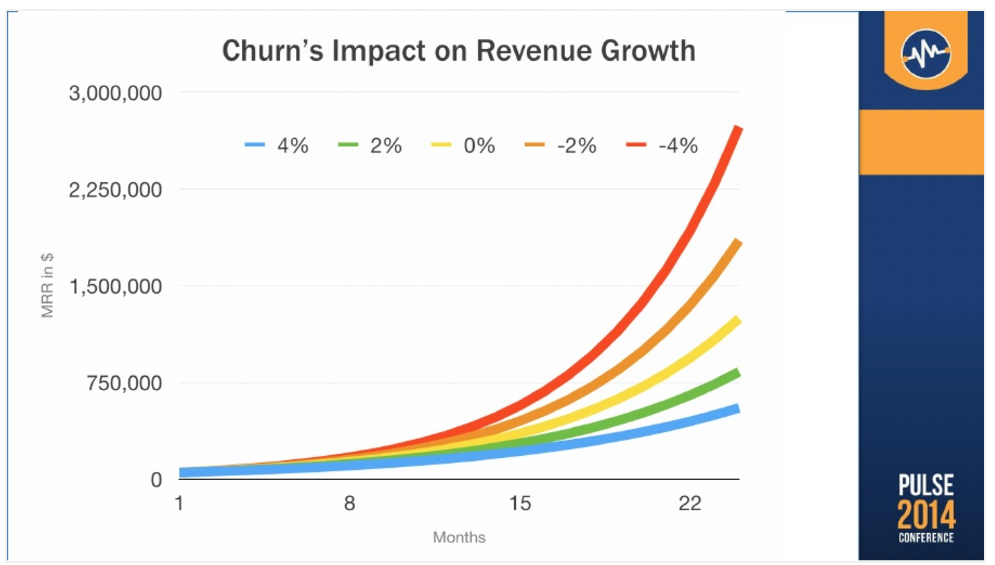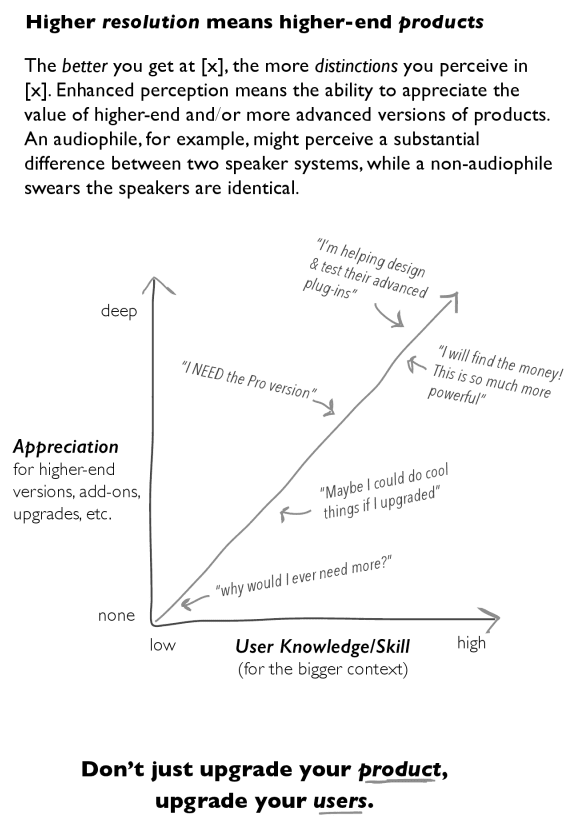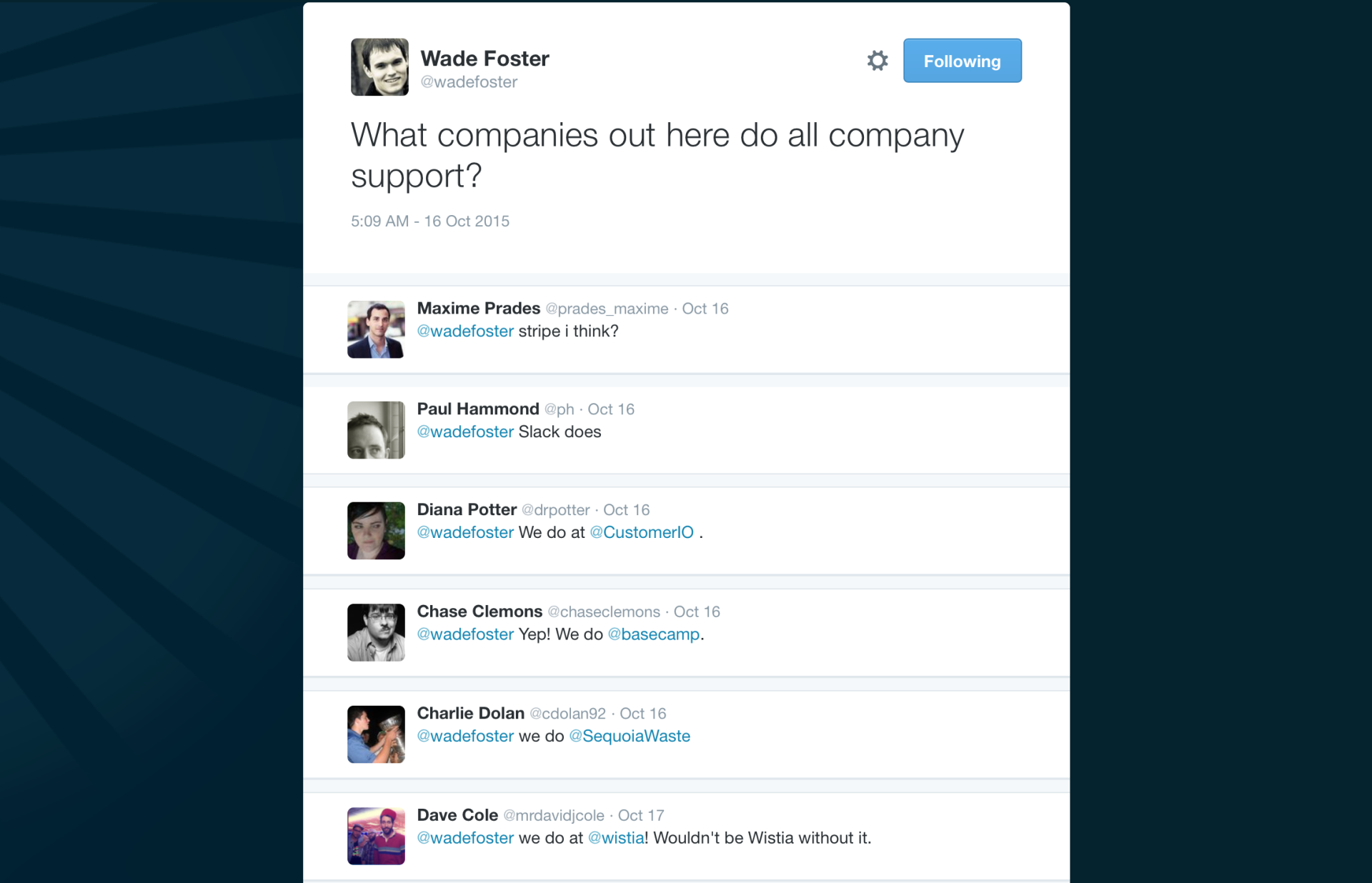Alright, so we just wrote recently about how content marketing is your most important startup growth channel. And of course we strongly believe that content marketing drives B2B SaaS growth more than any other single factor.
And of course we know that you’re already focusing on a million things, with visions of content, SEO, sales, programming, IT, tech support, advertising, nurture sequences, automation, influencers, social and more dancing through your head every day.
But if there’s one thing that touches everything you’re already thinking and doing about in your software-as-a-service company, it’s customer success.
More and more businesses are making the shift from customer support and account management to a more comprehensive customer success management approach.
The good news? It’s an easy switch to flip on and customer success ideals can illuminate all areas of your business pretty quickly. The bad news? If you’re not doing it, you’ll be blind in the dark in more ways than one.
What’s Happening If You’re Not Paying Attention to SaaS Customer Success
You’re busy. If you’re involved in growing a SaaS company, that’s a given.
It’s easy to write off customer success. Maybe you feel like you’re not big enough to need it yet. Maybe you’re just dealing with customer inquiries as they come in on a case-by-case basis and don’t see a need for a comprehensive program yet.
The problem is, customer success makes up a huge part of all the pieces that help your business grow. If you ignore customer success, it doesn’t just sit and wait – it will actively and negatively impact your current business and growth potential.
So what could be happening if you’re not consciously thinking about customer success?
1. Customers might not be succeeding.
Okay, so this is the obvious one. If you’re not focused on helping the customer succeed on your product, chances are, there’s a group of them who aren’t succeeding.
Of course, your product could be super well-designed, with seamless onboarding and an intuitive user interface – and that’s great, and that helps plenty of your customers do just fine with minimum assistance.
But how do you make sure your ideal customers are finding all the ways your product helps them succeed? How do you ensure that your customers not only feel like your product works, but that your company cares about their success?
That only comes from proactive customer success initiatives.
2. Your churn is higher than it might otherwise be.
You don’t need us to tell you how important churn is, but it’s hard to overstate how important it is to get a handle on your churn before you can grow.
Let’s say you’re a hypothetical early-stage startup with $50k in MRR. For simplicity’s sake, we’ll call that 50 customers at $1k each. Let’s say your customer acquisition cost (CAC) is around $1250 and your sales efficiency is about 80% (awesome!), and you’re growing at about 15% month-over-month.
Tomasz Tunguz of Redpoint Ventures did the math to demonstrate the compounding effects of churn as you move up the MRR ladder.
The difference between the red trajectory (4% less churn) and the blue trajectory (4% more churn) is just 8%, but look at how much more quickly the red trajectory gets you to your MRR goals!

Source: Tomasz Tunguz
Customer success is a major component in reducing churn. Although you may not have the resources to implement full-scale customer success management programs that involve three or four people per client, starting out with that foundation will help you scale your customer success to keep up with your growth.
3. You’re missing out on key info for product, sales and marketing.
Everyone talks to your customers and prospective customers, presumably. Your product folks, marketing folks and sales folks all rely on customer data to inform their strategies and tactics – even if product, marketing and sales aren’t separate roles so much as different hats during your early stages.
But who talks to your customers the most? Who talks to your customers at the critical times when they can’t figure something out or need to know how to make your product work in specific ways for them?
Your customer team.
Think of the information you could be gleaning from customer interactions and passing along in a structured way to your other teams:
- Is your onboarding working?
- Do customers understand your documentation?
- Are customers using all your features?
- Are there certain features that work better than others?
- What are your ideal customers doing with the product 3 months in? 6? A year?
- Where do they talk about your product?
- What’s on their feature wish list?
- Are you attracting the wrong fit in customers through certain channels, contributing to higher churn?
And so many more possibilities.
Seventy to 95% of your revenue from your clients come after your initial sale. If you’re armed with information about what your customer wants beyond that initial sale – and if you’re taking the opportunity to educate them about other ways your product gets them to their desired outcome – then you open up all of that room for your sales and up-sales teams to work.

Credit: For Entrepreneurs via Chargify
4. Your product is missing some humanity.
This one may feel fluffy compared to hard metrics like lifetime value (LTV) and churn, but the tone of your customer success efforts make a huge difference in the way your customers respond to your product.
Whether it’s a custom GIF Twitter thank-you for every new signup like Drift does or building a reputation for excellent customer success through above-and-beyond service like Zappos, when your customers feel like they’re dealing with humans, they’ll look more favorably on your brand.
Turning It Around: A Better Customer Success Framework
Of course, it’s possible you don’t have a program and aren’t consciously thinking about customer success, but you’re still doing pretty well and none of the things in the section above are happening to you.
Even if that’s your honest assessment, there’s still opportunity to improve how customer success and customer experience fit into your business – without adding another huge burden to your teetering plate.
Consider taking four actions to start upgrading your customer experience with just a few tweaks:
1. Change your mindset.
The first step to better customer success is to change how you might be thinking about it. It’s not customer service – it encompasses that reactive aspect and adds a more proactive arm that touches a lot more than your customer complaint inbox.
Customer success infuses every element of your company by defining how your customers will interact with and view the human element of your product. From your website to onboarding, from sales to deployment, it sets the tone for all your customer communications.
It’s easy to get distracted by sunny titles like Happiness Hero or Customer Champion, but make no mistake about it – customer success is serious business and a major part of your revenue potential.
Author of Predictable Revenue and business expert Aaron Ross said at the 2014 Pulse conference that the executive team of the future should be the Head of Sales, Head of Marketing and Head of Customer Success working together as equal partners, and he’s far from alone in that view.
2. Make it about success, not happiness.
Be clear on what you actually mean by a “happy customer.” As Lincoln Murphy of Sixteen Ventures says, “happy” customers can just as easily be “happily looking for another vendor.”
Happiness is hard to quantify, but “success” should not be. Have a clear view of what a successful customer means in terms of your product.
What is their desired outcome and did your product help them achieve that?
As HelpScout puts it, if you sell tripods, you want to help your customer become the best photographer they can be, because that’s their desired outcome. They’re not looking to become an expert on tripods.
Incidentally (or perhaps not-so-incidentally…) that’s one place content strategy comes in. You should be orienting your content marketing toward the same desired outcomes.
Educating your customers through content results in a more savvy customer, which lays the groundwork for customers who understand and appreciate additional features, premium versions and so on.

Credit: Kathy Sierra via HelpScout
3. Make it everyone’s job!
We know the old saying, “if everyone’s responsible, then no one is,” but we’re not saying that customer success should be owned by everyone.
You need a customer success manager or entire team, but customer success should be thoroughly baked into your culture to the point that it’s part of everyone’s mindset.
HubSpot did this by highlighting “Solve for the Customer” as their main rallying cry in their “Culture Code” values deck. Ensuring everyone in your organization wants to get your customer to their desired outcome results in automatic alignment.
Both Buffer and Zapier embody the cultural value that customer success is part of everyone’s job by actually having everyone contribute time to answering emails or social media inquiries. This puts everyone in contact with customers occasionally and helps keep everyone in touch with customers’ needs and desired outcomes.
When Zapier CEO Wade Foster asked what other companies do all-hands support, the responses included industry stalwarts Stripe, Basecamp, Slack and Wistia, among others.

Credit: Zapier
Better Customer Success Can Start Immediately
Putting customer success high on the priority list is easy. Building a customer success program isn’t – we won’t pretend it is.
But you can start focusing on customer success right away just by deciding to do it. Start with the small steps. Change your mindset. Clarify your ideal customer’s desired outcome. Talk to your team members about what that is, and help them understand how their role contributes to getting your ideal customer to that outcome.
Deciding to get better about customer success can be the seed that leads to less churn, better products and features, better market fit, better clients, more referral revenue, more second-round and renewal revenue, higher customer lifetime value and more alignment up and down your organization as everyone works to solve the customer’s problem.
Sharpening your focus can start with the next customer you talk to.
Did you enjoy this post? We write and promote this kind of content for our SaaS startup clients. If you’re interested in learning more, schedule a free consultation to talk through your content needs.